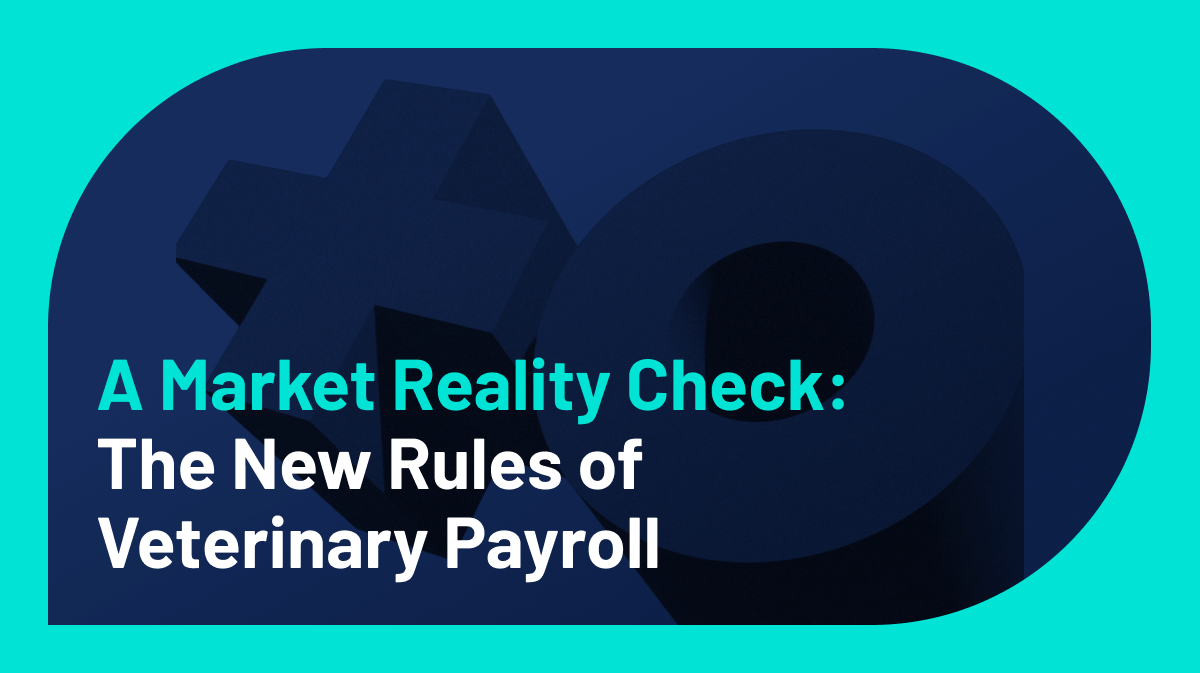
A Market Reality Check — The New Rules of Veterinary Payroll
The 2025 Payroll Landscape
Veterinary medicine has entered a new era of workforce management. Between economic uncertainty, shifting employee expectations, and fierce competition for talent, the rules of payroll are being rewritten in real time.
The 2025 Veterinary Payroll Report from iVET360 reveals a profession at a crossroads. Practices are posting solid revenue metrics, yet many are struggling to keep teams stable and satisfied. It’s not just about what you pay—it’s about how you support and sustain the people behind the numbers.
Revenue Is Up, But So Are the Pressures
Let’s start with the good news. Revenue per full-time employee (FTE) rose from $176,000 to $183,000, a 4 percent increase, while average revenue per DVM FTE climbed by 5.5 percent, from $938,000 to $990,000. That’s impressive productivity.
Payroll-to-revenue ratios held steady at 41.1 percent, and support costs remain around 22 percent of revenue. On paper, that looks healthy. But stability doesn’t mean satisfaction. Behind those metrics lies a workforce experiencing fatigue, turnover, and burnout at alarming rates.
Turnover Is the Hidden Expense
Across the country, veterinary hospitals are seeing turnover rates exceeding 30 percent in key roles. Receptionists, technicians, and kennel staff are cycling out faster than ever. For a profession built on relationships, that turnover carries heavy costs—both financial and cultural.
Each time a team member leaves, the practice loses not only their skill but also the trust they’ve built with clients. Every new hire requires onboarding, training, and adjustment periods that stretch already thin teams.
And while revenue may be growing, the emotional toll is mounting. A practice running at 80 percent with a stable, happy team will always outperform a burnt-out team at 100 percent.
Why Numbers Alone Don’t Tell the Story
Wage stability can look like success, but it doesn’t guarantee satisfaction. The data shows we’re generating more income per employee, yet morale and retention lag behind. It’s proof that a financially healthy practice is not automatically a humanly healthy one.
That’s why this year’s report emphasizes balance—between efficiency and empathy, between productivity and pacing. Practices that prioritize their people as much as their profits are building more resilient teams and stronger client experiences.
Building Confidence in Compensation Conversations
Compensation isn’t a one-time conversation. It’s an ongoing strategy that combines transparency, benchmarking, and growth opportunities. The most successful practices are conducting regular wage reviews using market data instead of waiting for annual check-ins.
They’re linking pay increases to professional development and creating clear career paths that reward learning, not just longevity. When team members see that their growth matters, they’re far more likely to stay.
The Takeaway
This year’s payroll data is more than a snapshot—it’s a signal. Practices must use these insights not just to plan budgets but to design better workplaces.
Your people are your greatest investment, and the ROI on engagement is undeniable. As you head into 2025, focus less on “how much” and more on “how well.”







